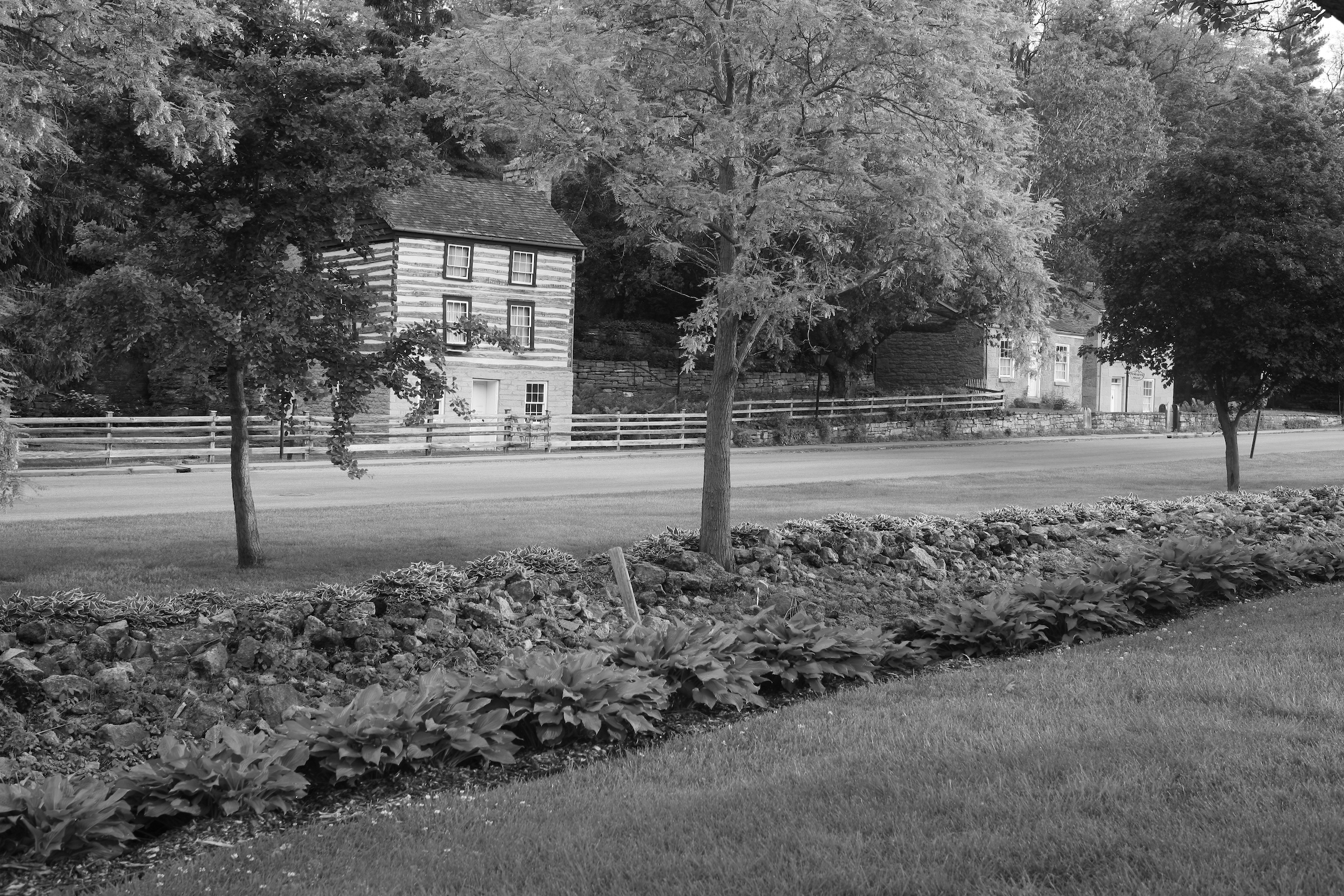
Our History
History of Pendarvis
The unique buildings collected at Pendarvis seem to belong to another place and time. Built in the early to middle 19th century, they reflect the origins of the people who built them – immigrants drawn to a burgeoning mining industry in the southwestern corner of the state.

Lead Mining Boom Lures Cornish Immigrants
In the early 19th century, lead mining was more promising and attractive to potential settlers of the southwestern corner of the state than either the fur trade or farming. The presence of lead was no secret. Members of the Ho-Chunk, Mesquaki (Fox), Sauk and other tribes had mined lead for hundreds of years before French fur traders arrived in the 1600s. Despite the land that would become Mineral Point in 1827 not being open for white settlement, hundreds of miners and settlers illegally poured into the region, violating the treaty rights of native nations settled there.

A series of treaties eventually ceded all Indian lands south of the Wisconsin River to the U.S. by the early 1830s, and experienced miners began arriving from Cornwall in southwestern England. These Cornish immigrants settled in Mineral Point and throughout the Upper Mississippi lead region and constructed small, limestone homes similar to those they left behind in England.

Mineral Point’s Growth
The lead mining boom was on, and Mineral Point became a thriving commercial center that housed one of Michigan Territory’s first land offices and served as a territorial county seat. The boom continued into early Wisconsin statehood, when lead and zinc mining and processing became the dominant economic activity in the region.

Saving Mineral Point’s Cornish Heritage
Almost a hundred years later, two gay men, Robert Neal and Edgar Hellum, found Mineral Point’s history and heritage teetering on the brink of oblivion. Neal had just returned from London to find many of the stone cottages, built by the early 19th-century Cornish immigrants, had vanished. He struck up a friendship and eventual relationship with Hellum, who shared his interest in the old rock dwellings. Now partners in both business and in life, Neal and Hellum set out to preserve at least one of these tangible symbols of Mineral Point’s past, buying the first cottage for just $10.

Keeping Cornish Traditions
Starting in 1935, Neal and Hellum acquired and rehabilitated not one but several original structures. Later they would acquire and restore a rowhouse just up the hill. Following the Cornish tradition of giving a name to each house, they called their first restoration Pendarvis, after an estate in Cornwall. They gave the other houses curious Cornish names too – Polperro and Trelawny.
Restoring Polperro. WHI #37981

Gardens and Prairie Restorations
Neal and Hellum created the artistic and verdant gardens of Pendarvis starting in the 1930s to recall those the Cornish settlers planted upon their arrival in Mineral Point a century earlier. In 1988, a 43-acre prairie restoration project of the Merry Christmas Mine Hill Trails and Prairie began as a joint venture between the Wisconsin Historical Society and the Wisconsin Conservation Corps, continuing in 1993 with a Department of Natural Resources cleanup of the remaining environmental impact left by decades of mining. Today the prairie thrives with indigenous grasses and flowering plants, while protecting historic mining features.

Restaurateurs
In need of a livelihood to support their continuing work on the restoration, Neal and Hellum established the Pendarvis House restaurant in 1935. They specialized in serving tea, saffron cake, scones, preserves, and simple Cornish pasties, utilizing recipes passed on from Neal’s own grandmother, a Cornish immigrant in the mid-1800s. They ended up earning a national reputation for authentic Cornish fare and welcomed diners from every state in the Union and many foreign countries. They operated the restaurant for 35 years before retiring in 1970.

Pendarvis Becomes a Wisconsin Historic Site
In 1971, the Wisconsin Historical Society acquired the property. That year it began operating the restoration as a historic site interpreting the history of Cornish settlement and Wisconsin’s lead-mining heyday. Today, the site focuses on the preservation of these stories through the ventures of Neal and Hellum and their lives together.
More History
Learn more about the history of Pendarvis, Cornish immigrants, and Bob Neal & Edgar Hellum by exploring the collections and archives at the Wisconsin Historical Society.
Images of History








